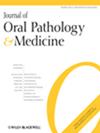Adverse Reactions to Cosmetic Fillers in the Oral and Maxillofacial Region: Clinico-Pathological, Histochemical, and Immunohistochemical Characterization
Abstract
Background
Cosmetic injections are increasing, as their complications, which can be misdiagnosed as neoplastic lesions. This study aimed to detail clinical, pathological, histochemical, and immunohistochemical features of adverse reactions to cosmetic fillers in the oral and maxillofacial region.
Methods
Samples were retrieved from five pathology laboratories. Hematoxylin–eosin (H&E), Alcian Blue, Sirius Red, and Toluidine blue stains were performed, as well as immunohistochemistry for CD68, CD3, and CD20. H&E was evaluated under polarization. Descriptive statistics were performed.
Results
Twenty-three cases were included. Polymethyl-methacrylate was the most common material. Most reactions affected women, lips and were asymptomatic, with a variable time of evolution, presenting as nodules. Materials had different shape and size on H&E. Giant cells were commonly found, except in silicone and hyaluronic acid. Foreign-body granuloma was frequent in polymethyl-methacrylate. Calcium hydroxyapatite and poly-L-lactic acid were refractile under polarized light. Hyaluronic acid and polyacrylamide hydrogel were metachromatic by Toluidine blue. Alcian blue was positive in all cases of hyaluronic acid. Mast cells were detected in all materials, except hyaluronic acid and polyacrylamide hydrogel. Eosinophils were rarer than mast cells. Numerous CD68-positive cells were seen in all cases. All cases had CD3-positive cells, with variable amounts. CD20 was scant or negative in most cases.
Conclusions
An evident macrophage reaction is observed in all aesthetic fillers, frequently associated with giant cell formation. Despite similarities, there are specific features of each material and the host response that assist the correct histopathological diagnosis. Immunohistochemistry for CD68 and Toluidine blue stain are useful in doubtful cases.

 求助内容:
求助内容: 应助结果提醒方式:
应助结果提醒方式:


